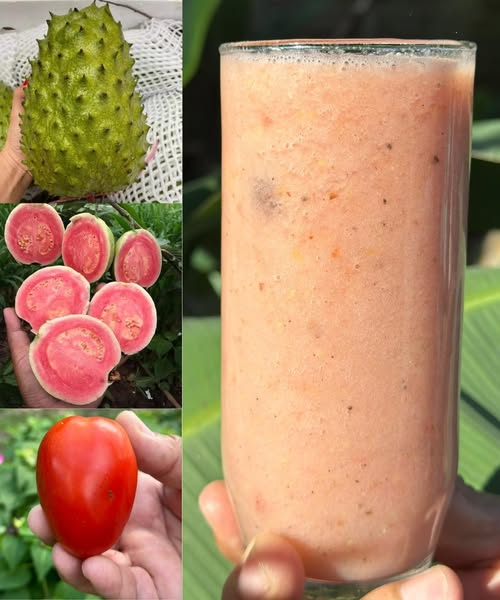Introduction:

Beetroot has exploded in popularity over recent years, often hailed as a superfood. From detox juices and vibrant salads to pre-workout smoothies, this root vegetable is praised for its impressive benefits: improved blood flow, lower blood pressure, and enhanced stamina. But here’s the twist most health blogs skip—beetroot isn’t risk-free.
That’s right. While beetroot can be a valuable addition to your health regimen, it’s crucial to understand the potential side effects that may arise from its regular consumption. In this post, we dive deep into 7 side effects of beetroot you must know before making it a diet staple—especially #5, which could catch many off guard.
If you believe that “natural” equals “safe,” this article will challenge that notion. Let’s uncover what you need to know to make informed, safe dietary decisions.
1. Beeturia: A Red Flag You Shouldn’t Ignore
Have you ever noticed red or pink urine after eating beets? You’re not alone. This condition, called beeturia, affects around 10–14% of the population.
- What it means: While beeturia is typically harmless, it can sometimes signal iron deficiency or malabsorption issues.
- Why it happens: The pigment betanin, responsible for beetroot’s red color, isn’t broken down in everyone’s digestive system.
- Should you worry? Not necessarily—but if beeturia is persistent or accompanied by other symptoms (like fatigue), consult your doctor.
📝 Pro Tip: If your urine changes color after eating beets, keep an eye on your iron levels.
2. Kidney Stones: A Risk for the Vulnerable
Beetroot contains high levels of oxalates, which are naturally occurring substances that can bind with calcium to form kidney stones—especially in those genetically predisposed.
- Who’s at risk? Individuals with a history of oxalate-type kidney stones.
- What research says: According to the National Kidney Foundation, oxalate-rich foods like beets can increase the risk of recurrence in stone-formers.
- How to reduce the risk: Pair beetroot with calcium-rich foods to reduce oxalate absorption.
🚫 Avoid beetroot if you’ve been advised to follow a low-oxalate diet.
3. Allergic Reactions: Rare But Real
Beetroot allergy is uncommon, but when it occurs, it can trigger uncomfortable symptoms ranging from skin rashes to fever, itchiness, or even anaphylaxis in severe cases.
- Signs to watch for: Hives, stomach cramps, tight chest, or shortness of breath after consumption.
- True story: One clinical report documented a patient developing generalized urticaria (hives) just 2 hours post-consumption.
- What to do: Eliminate beetroot and seek medical advice if symptoms appear.
🚨 Bottom Line: Never dismiss mild allergic symptoms—they can escalate.
4. Low Blood Pressure: A Danger for Hypotensive Individuals
Beetroot’s nitrate content helps lower blood pressure, a benefit for many—but a concern for others.
- How it works: Nitrates convert to nitric oxide in the body, relaxing blood vessels.
- Risk: For people with already low blood pressure, this effect could cause dizziness, fainting, or even shock.
- Stat insight: One study showed that beetroot juice could reduce systolic blood pressure by 4–10 mmHg within a few hours.
💡 Expert tip: If you suffer from hypotension, monitor your blood pressure before and after consuming beetroot.
5. Digestive Discomfort: Don’t Let This Surprise You
High in FODMAPs (fermentable oligosaccharides, disaccharides, monosaccharides, and polyols), beetroot can lead to bloating, gas, and stomach pain in people with IBS or sensitive guts.
- Real impact: A mere ½ cup of cooked beets can cause digestive distress for FODMAP-intolerant individuals.
- What to do: Start with small quantities and observe your body’s reaction.
📉 Fact: Gut sensitivity affects over 15% of the global population—so you’re not alone if beets upset your stomach.
6. Blood Sugar Fluctuations: A Hidden Glycemic Threat
Despite its earthy taste, beetroot is moderately high in sugar, which can affect blood sugar levels—a red flag for diabetics.
- Glycemic index: Beets have a GI of around 61, making them moderately high.
- Concern: Although beets are rich in fiber, consuming them in juice form can spike blood glucose.
- Solution: Eat whole beets instead of juicing to retain fiber and reduce glycemic load.
🔍 Quick Stat: Diabetic patients should aim for foods with GI scores below 55—beets cross that line.
7. Staining Teeth & Skin: The Cosmetic Side Effect
Yes, it’s superficial—but it matters. The deep red pigment in beetroot can stain your teeth, hands, clothes, and even kitchen counters.
- Why it happens: The natural dye in beetroot, betanin, is incredibly potent.
- Fix: Rinse your mouth immediately after eating and consider using a straw for beetroot juices.
- Fun fact: Beetroot was once used as natural lipstick and blush due to its rich color.
😬 Don’t let beetroot ruin your smile— practice post-beet hygiene!
Frequently Asked Questions (FAQs)
Q1: Is it safe to eat beetroot every day?
Yes—for most people. However, moderation is key, especially if you have a history of kidney stones, low blood pressure, or IBS.
Q2: How much beetroot is too much?
Stick to ½ to 1 beetroot per day or 100–200 ml of juice. Excess consumption may increase the risks outlined above.
Q3: Are beetroot supplements safer than raw beetroot?
Not necessarily. Supplements often concentrate nitrates and oxalates, potentially increasing risks if overused.
Q4: Can children eat beetroot safely?
Generally yes, but in small amounts. Watch for any signs of beeturia or allergic reaction.
Q5: Can beetroot help with weight loss?
Yes, its fiber content and low calorie count make it weight-loss friendly. But again, balance is essential.
Conclusion: Be Informed, Not Alarmed
Beetroot is nutrient-rich, colorful, and powerful—but it’s not without its pitfalls. This vibrant root can be a great health ally when consumed in moderation and with awareness of your individual risk factors.
If you’re planning to incorporate beetroot into your diet:
- Start small.
- Monitor how your body responds.
- Talk to your doctor if you have underlying conditions like kidney disease, low blood pressure, or diabetes.
🔑 Key takeaway: Natural doesn’t always mean harmless. A well-informed approach to superfoods like beetroot ensures you reap the benefits without the unexpected side effects.

